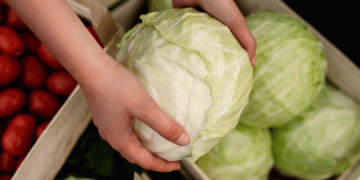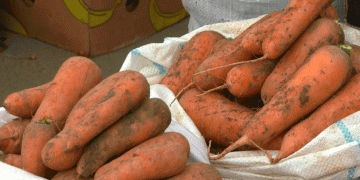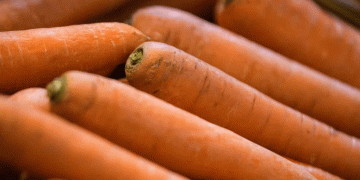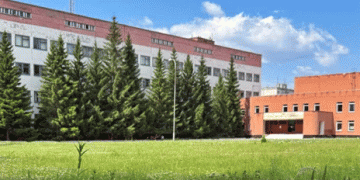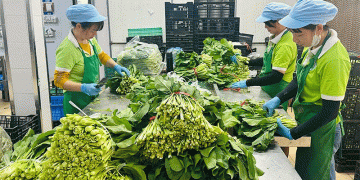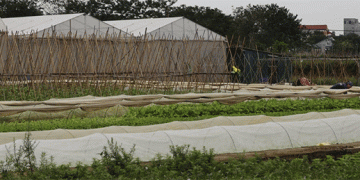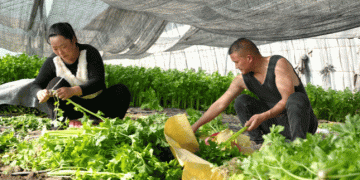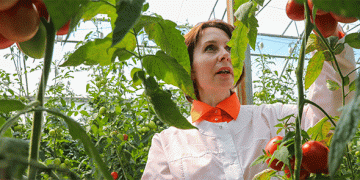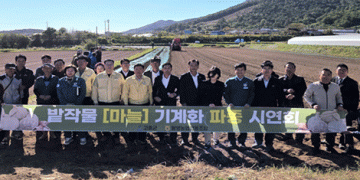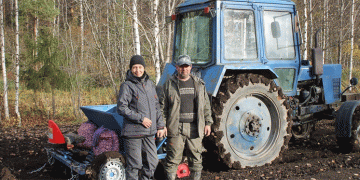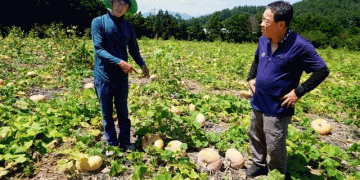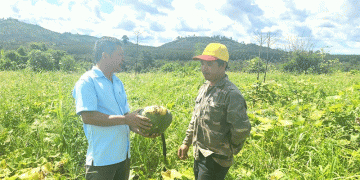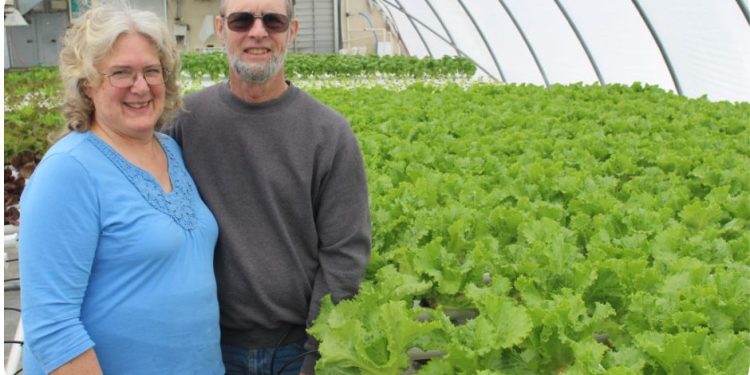There’s a learning curve to growing hydroponic vegetables, but teaching your customers is as important.
“Inviting our chefs and other customers to visit our greenhouse has helped,” said Lois Smucker of Smucker Farms in Orrville, Ohio. Lois and her husband, Glen, have a 30-foot by 124-foot greenhouse and grow hydroponic, cool-season vegetables year-round.
“Chefs sometimes think you’re a big warehouse and they can change their order quickly,” Lois said. “We tell them, ‘If you change your menu, you need to give us eight weeks notice or we may not have enough product for you’ and they’ve been good about that. It helps for them to see our operation.”
The Smuckers sell at the North Union Farmers Market in Cleveland and to restaurants and bulk food stores. The Smuckers recently shared their experiences at a Hydroponic Greenhouse Workshop at Ohio State University’s Ohio Agricultural and Research Development Center at Wooster, Ohio.
Product diversity is important.
“We’ve found customers will only buy so many heads of lettuce,” Lois said. The Smuckers started growing basil and arugula, and found they could sell twice as much product. “We can harvest 40 pounds of arugula a week and we can sell it all at farmers’ markets and to chefs,” Lois said. The Smuckers also grow Romaine lettuce, Bibb lettuce and leaf lettuce. “We’ve changed over the years, depending on what the customers and chefs want,” Lois said.
Lettuce heads are shipped with the roots on – even to restaurants. The preparation before shipping is to pull off any dead or discolored leaves, clean off the roots and inspect the heads for bugs.
“The chefs like the roots on because the lettuce lasts longer,” Lois said. “They had to be taught you can rehydrate it if it starts to wilt a little.”
Production records are vitally important to meet demand. Basil may go three months before a need to replant. Arugula may go six weeks. There’s always a new crop coming, but you must know when a crop can be harvested a little sooner than intended to meet a pressing demand. “We’ve served some restaurants for 10 years and I can help educate a new chef on how much they’re going to need,” Lois said.
The Smuckers built their first greenhouse in 1997 as they diversified their farm away from animal agriculture. A packing shed was soon added. The farm has been in the family for more than 100 years and the fifth generation – Lois’ and Glen’s grandchildren – are helping on the farm. “We’ve taught them what aphids look like,” Lois said. “They can crawl under the tables easier than we can.”
Propane was the first heat source, but the tank had to be filled six times a year. The farm soon changed to a corn burner with propane as the back-up. The Smuckers grow their own corn and now only buy one tank of propane a year.
The greenhouse temperature is computer-controlled. Lighting is set for 14 hours of sunlight year-round. Solar panels were installed in 2016 to manage energy costs, which were easily running $1,800 a month in the winter months. Solar has brought utility costs down to $100 a month.
The original system cost $88,000, but a huge energy credit and a USDA grant brought the cost down dramatically. The key to getting the USDA grant was the solar energy system isn’t linked to the homes on the farm and all of the electricity generated is for agricultural use. The equipment supplier monitors the system remotely and responds to repair needs without being called.
The operation uses troughs for its hydroponic vegetables and that helps manage humidity. “We don’t have anything on the floor because we don’t have tomatoes,” Lois said. “We get air flow above and below the crop and don’t have much moisture on the floor.” Drains run the length of the greenhouse in the middle of the floor.
The seedlings are started in rockwool. “We can get a 99 percent germination,” Lois said. “We plant seed by hand, which is a little tedious, but the grandkids have learned to help with that.” Seedlings are watered by hand at the very initial stages at the beginning, then trickle irrigation takes over.
There is a propane-fired, CO2 generator for CO2 enhancement.
The Smuckers have learned over time how to manage their water source which has a high buffering capacity from the calcium carbonate in it. “We had seedlings that had been in two days and weren’t growing,” Glen said. “The EC (electrical conductivity) kept testing OK, but because of the hard water the plants weren’t getting enough nitrogen.”
The first attempt at a solution was to add sulfuric acid because of the ease of use and safety. Sulfur toxicity then started showing up and it was learned the hard water had a high sulfur content. The next attempt was to use nitric acid to get the pH down to 6.5, but so much had to be used root injury occurred. The eventual solution was to use nitrogen fertilizer to manage the water pH.
“Your water situation is going to be completely different than ours so you’re going to have to learn your own water,” Glen said. The Smuckers like to keep the pH between 6.5 and 7.0 to ensure adequate nutrient availability. An 18-inch culvert is used for the soak tank with two hours a good soak time although overnight is better.
The electrical conductivity (EC) stays at about 1.3 and is not varied through the growth cycle. “Different plants like different ECs,” Glen said. A crop’s response to EC determines where the crop is placed in the greenhouse.
A concrete floor was added to the greenhouse soon after it was built to help manage diseases and keep ants out which might bring in aphids.
IPM has also had a learning curve in the greenhouse. Using sticky cards and magnifying glasses, understanding insect and disease life cycles and symptoms, and pinpointing control measures are all part of the process. Beneficials have been worth identifying, too, especially for aphids.
“We first tried ladybugs,” Glen said. The problem is that you must match the specific ladybug to the specific aphid. “It works,” he said, “but didn’t work really well.” The ladybugs clumped on hot spots on the floors and on other warm areas when the weather turned cold.
There are parasitic wasps that feed on aphids. “The aphids got big and we had to use a different kind of wasp for the bigger aphids,” Glen said. “You have to be very specific about what pests you want to control and matching the control to the pest.”
The Smuckers also use insecticidal soap. They spray pyrethroid aerosols to knock insect populations down in extreme cases.
“There is a lot to learn,” Lois said. “We went to classes and that helped. There are resources out there to help you.”
– Dean Peterson, VGN Correspondent
Above: Lois Smucker, left and her husband, Glen, grow hydroponic vegetables year-round at Smucker Farms. They have expanded their product line to include basil, arugula, Romaine lettuce, Bibb lettuce and leaf lettuce. Photo: Dean Peterson















